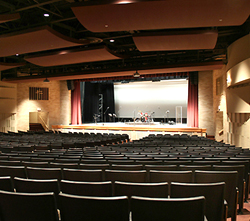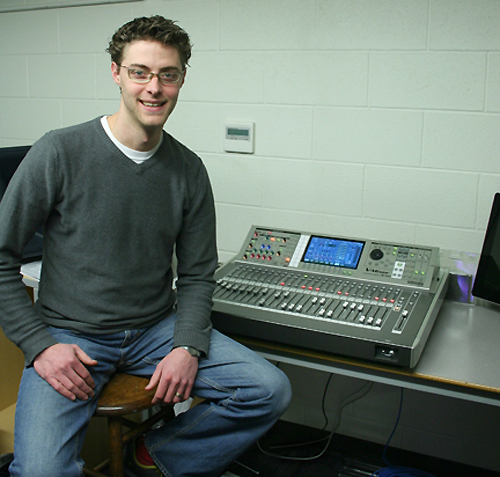
After reviewing some preliminary designs, Mosterd saw exceptional value in the simplicity of the Roland V-Mix line, as well as the company’s REAC (Roland Ethernet Audio Communication) low-latency digital audio transport platform.
“Because we were spending so much on the loudspeakers, I was afraid that the capabilities for on-stage monitor mixing as well as recording would have to be put off for a few years, but the Roland V-Mix solution allowed us to implement both, and to a very high degree,” Mosterd notes.
The backbone of this effort is a Roland digital snake linking a Roland V-Mix M-400 digital console/mix system at front of house, another M-400 in the equipment room for recording, and numerous Roland M-48 personal mixers on stage for use by performers.
Using the S-4000 RCS remote control software for the digital snake system, channels are easily patched and labeled, in addition to facilitating online or offline set-up each M-48 personal mixer.
A bonus is that the software is available in a Mac version – the school is committed to the Mac platform. This is furthered by a Mac application that allows portable re-patching and recalling scenes via an iPhone.
The M-48 personal mixers simply plug into a 32 x 8 stage box that’s generally rolled to a central location on the stage, usually behind the drummer for music applications. The system’s 20 channels of Shure wireless microphones reside in a portable rack with another 16 x 8 stage box that can be transported, topped by the V-Mixer from the equipment room, to remote locations in the building and even to the football field.

The house sound is topped off with the addition of a hearing loop system fed by an Ampetronic ILD1000G audio induction loop driver, so that individuals with a Telecoil (t-coil) equipped hearing aid can receive audio signals directly in their hearing aid.
Rounding out the project is a dual-screen projection system to the left and right of the stage, joined by an additional large center screen projection system. Projectors are all Epson Native HD resolution units under the control of a Crestron MC5 control system that also handles the respective motorized screens.
Ceiling issues once again complicated mounting locations for the left and right screens. The contractor and A/V team came together and compromised, moving the acoustical clouds to the left and right sides upward about a foot, along with some movement of lighting fixtures in the region and the main loudspeaker arrays, to accommodate acceptable mounting positions. The projectors could be mounted off the back side of the main catwalk without a problem.
There wasn’t enough left in the budget to provide a complete video switching/editing suite at this time, but the team did provide a solution while also building infrastructure for the future. Multiple camera locations were wired for both analog and digital video, with the school using the existing analog camera setup as a start.
An Extron DVS 304 DVI input switcher/scaler with DVI output was added to accomplish the video input switching and scaling for the dual projection system, and an Extron DVI 201 transmitter/receiver pair was also added to allow for inputs from the stage to be sent to the DVS 304 DVI over Cat 5 cable.
As funds become available, the school will be purchasing HD cameras and an HD switcher to complete the system.
Go to the PSW Photo Gallery to see more images from this project.
